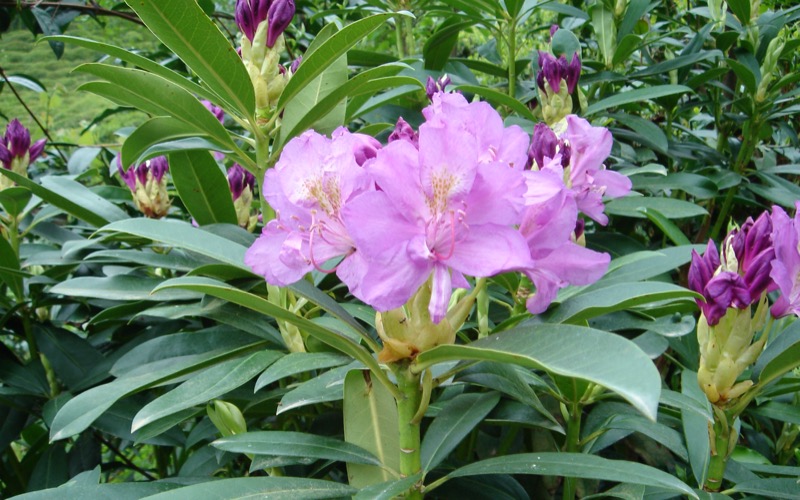Toxic Tastes – Ireland’s Bees and Non-Native Rhododendron Nectar
Posted on: 09 November 2015
Botanists from Trinity College Dublin's School of Natural Sciences have discovered that the nectar from a common, non-native plant, is toxic to some Irish bees. These effects vary based on the species of bee consuming the nectar, but they are lethal to some.
Common rhododendron is one of the most invasive plants in the United Kingdom and is also notorious in Ireland for threatening native forest habitats.
In the study just published in Functional Ecology, research led by the Trinity botanists with UK collaborators at Royal Botanic Gardens, Kew, University of Greenwich, Royal Holloway University of London and Newcastle University shows that its nectar is extremely toxic to native honeybees.
The nectar contains grayanotoxins, natural plant produced chemicals, which occur in leaves and help rhododendrons avoid being eaten by insects and mammals.

The study, funded by Science Foundation Ireland and the Irish Research Council, was led by Research Fellow, Dr Erin Jo Tiedeken, and Professor in Botany, Jane Stout, of the School of Natural Sciences in Trinity, with the collaborators from the UK.
The team fed artificial nectar containing realistic concentrations of grayanotoxins, isolated from the Rhododendron flowers by scientists at Kew, to three economically and ecologically important pollinating bee species to investigate how these nectar toxins impacted native bees.
Dr Tiedeken said: “The nectar proved to be extremely toxic to the native Irish honeybee species as it killed individuals just hours after they had consumed even the smallest doses. The nectar also had negative impacts on the foraging behaviour of a native Irish solitary bee species, such that individuals became paralysed after feeding. This research therefore demonstrates that invasive Rhododendron will never provide a viable food resource for bees susceptible to nectar grayanotoxins.”
However, the reactions of the honey and solitary bees to nectar grayanotoxins were very much in contrast to the response of a native Irish bumblebee species. Native buff-tailed bumblebees were able to consume the nectar with no negative health impacts. Furthermore, even when the bumblebees were weakened by lack of food or parasite infection, eating Rhododendron nectar had no negative effects.
The project’s chemist, Professor Phil Stevenson, at Kew said: “What we don’t know is how bumblebees cope with this natural toxin and why some other bee species can’t or even why the plant apparently seeks to poison some potentially good pollinators. It may be a mechanism to select specialists that are more effective at pollinating the plant.”
As a result, invasive Rhododendron could provide an important, abundant nectar resource for this bumblebee species, especially in the early spring when bumblebee queens are establishing their colonies.
Professor Stout said: “This study shows that invasive plants don’t have the same effects on all species of bee and that they only provide a new food resource to those that can tolerate their nectar toxins. Furthermore, this work highlights the importance of comparing the susceptibility of multiple species to chemicals in nectar (both natural and synthetic, including pesticides) before making conclusions about the impact of chemicals on pollinators as a whole.”
